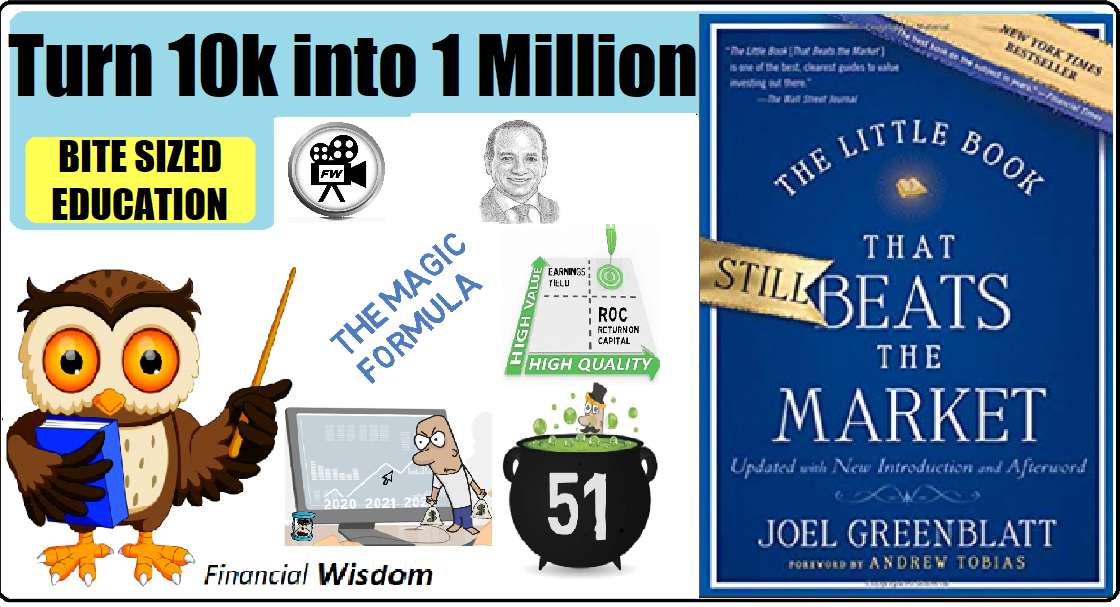In Brief
Magic Formula Investing is a value investing strategy based on buying 20-30 "good, cheap companies" defined as having the best available combined ranking in terms of earnings yield and a return on capital.
Background
A widely respected hedge-fund manager, Joel Greenblatt started as a value purist but was influenced by Warren Buffett's view about growth being part of the value equation. He founded Gotham Capital, a fund which apparently returned over 40% annualized from 1985 to 2005. By 1995, it had returned all money to its outside investors. He has authored two books, You Can Be A Stock Market Genius and New York Times bestsellier, “The Little Book That Beats the Market”, and is also adjunct professor at Columbia University Business School. Greenblatt espouses MFI as a do-it-yourself version of the approach he has used while amassing his investment track record. With the “Little Book”, Greenblatt wanted to write a book his children could read and learn from. The main point Greenblatt makes is that investors should buy good companies at bargain prices.
Magic Formula Investing uses return on capital and earnings yield as its inputs. Return on capital is seen as the best determinant of whether a business is a good one or not. Companies that can earn a high ROC over time generally have a special advantage that keeps competition from destroying it (e.g. name recognition, a new product that is hard to duplicate or a unique business model).
Earnings yield is the metric that shows whether a company is cheap or not. Greenblatt says that stock prices of a firm can experience “wild” swings even as the value of the company stays relatively constant giving investors opportunities to buy low and sell high.
Calculation / Definition of the Magic Formula
- Define minimum Market Capitalization that meets your liquidity needs. Greenblatt used a market capitalization floor of $50 million, but advised that you can set the minimum as high as $5 billion.
- Sector Filter: Due to their unique financial structures, all stocks in the financial and utility sectors are excluded.
- Calculate Earnings Yield = EBIT / enterprise value.
- Calculate Return on Capital = EBIT / (Net fixed assets + working capital)
- EY Rank: Rank the stocks in descending order based on Earnings Yield and assign a rank number to each.
- ROC Rank: Rank the same stocks in descending order based on Return on Capital…











